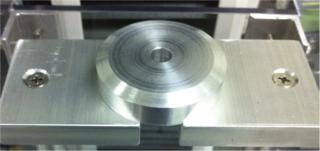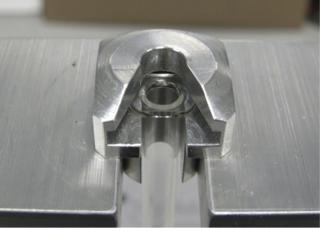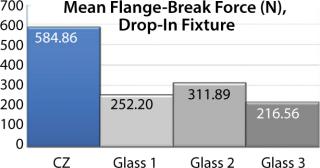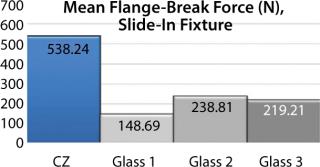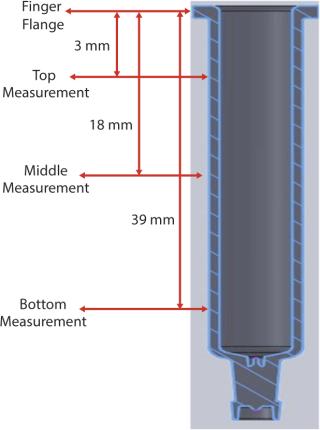Plastic syringes are viable alternatives to glass syringes in the biopharmaceutical market. They have two main advantages over glass syringes: their break resistance (specifically on the finger flange) and their ability to maintain tighter dimensional tolerances and less variability (because of the flexible molding process). Both attributes are critical when a 1-mL long prefilled syringe is used with an autoinjector device.
The high break resistance of plastic syringes can reduce the number of rejected units during a fill–finish process. And when used in autoinjector devices, plastic syringes can prevent failures and product recalls. The low dimensional variability exhibited by plastic syringes also can help ensure proper fit and consistent functionality within autoinjector devices.
We performed studies to compare such attributes using syringes made of cyclic olefin polymer — specifically, Daikyo Crystal Zenith (CZ) 1-mL long syringes — and glass 1-mL long syringes. CZ 1-mL long insert molded syringes withstood a significantly higher flange break force than did glass 1-mL long staked-needle syringes from three different glass vendors. Plastic syringes required a force at least 72% and 125% higher than the glass syringes, respectively, when tested using drop-in and slide-in fixtures.
PRODUCT FOCUS: ALL PARENTERALS
PROCESS FOCUS: MANUFACTURING
WHO SHOULD READ: PRODUCT DESIGN, MANUFACTURING, PROCESS ENGINEERS
KEYWORDS: P
LEVEL: INTERMEDIATE
Our dimensional analysis demonstrated that CZ 1-mL long syringes consistently produced less variation and a lower standard deviation (SD) than glass 1-mL long syringes for outer dimension (OD), inner dimension (ID), and wall thickness at three measurement points along the length of the barrels. The plastic long syringes had a standard deviation for OD measurements >38%, ID measurements >79%, and wall thickness >53% lower than glass 1-mL long syringes.
Flange BreakageThis study evaluated the maximum force required to induce flange breakage on CZ 1-mL long syringes and glass 1-mL long syringes. We used two different fixtures to support syringe flanges.
Background: Our study compared the syringe-barrel flange strengths of CZ 1-mL long syringes (made of cyclic olefin polymer) with those of competitive 1-mL long glass syringes. Because plastic is inherently more break resistant than glass, we hypothesized that syringes made of plastic would outperform glass syringes when tested to failure. We tested syringes using two different fixtures to hold the flanges — drop-in and slide-in (Photos 1 and 2). They simulate possible ways a syringe might be held in an autoinjector.
Photo 1:Methods: We tested 30 syringe barrels per sample set (one CZ vendor and three different glass vendors) in each fixture. A drop-in fixture supports syringe flanges on all sides, and a slide-in fixture supports syringe flanges on three sides. We placed an elastomeric piston in each syringe barrel before testing. Using a material testing system (MTS) from Instron (Norwood, MA) and a rod, we applied a force to the pistons at a fixed rate of 100 mm/min. That force continued until the piston bottomed out in the barrels and caused the flange or hub to break.
Results and Discussion: With the drop-in fixture, CZ syringes had significantly greater flange strength than the three types of glass syringes tested. Flange-break forces for CZ syringes were 132% greater than they were for glass syringes from Vendor 1, 72% greater than they were for glass syringes from Vendor 2, and 170% greater than for glass syringes from Vendor 3 (Figure 1).
With the slide-in fixture, CZ syringes showed flange-break forces 262% greater than glass syringes from Vendor 1, 125% greater than glass syringes from Vendor 2, and 146% greater than glass syringes from Vendor 3 (Figure 2).
Two different types of breaks can occur during a flange-supported break force test. The syringe can break at the flange, which is the point where the syringe is supported. The syringe also can break around the hub, which is the point where the force is applied to the syringe by the piston. Photo 3 shows those types of flange breakage.
Photo 3:This study demonstrated the dimensional consistency of CZ 1-mL long syringe barrels and glass syringe barrels. Dimensions measured were the barrel outside dimension (OD) and inside dimension (ID). We calculated wall thickness using both OD and ID measurements.
Background: Many biopharmaceutical companies produce prefilled syringes with autoinjector devices. A syringe barrel with less dimensional variability not only helps to ensure a proper fit into an autoinjector but also helps ensure functional consistency with regard to break-loose and glide force. Those are significant factors when selecting the proper device for a prefilled syringe. The consistency of barrel ID measurement throughout the length of a barrel provides consistent functional performance of a syringe.
Methods: The metrology laboratory in our company’s West Scottsdale, AZ facility measured 100 syringe barrels per sample set (one CZ type and glass syringes from two vendors) using a Smartscope Flash and coordinate measuring machine (CMM) from Optical Gaging Products. We took measurements at three points along the length of the barrel: at 3 mm (top), 18 mm (middle), and 39 mm (bottom) from the top of the finger flange (Figure 3). We measured OD and ID at the same three distances along the barrel and reported results to three decimal places. Wall thickness is the difference between barrel OD and barrel ID (barrel OD – barrel ID = wall thickness).
Results and Discussion: CZ syringes had an average OD of 8.163 mm, 8.073 mm, and 8.018 mm (top, middle, and bottom, respectively). Glass syringes from Vendor 1 had an average OD of 8.139 mm, 8.146 mm, and 8.146 mm (top, middle, and bottom, respectively). Glass syringes from Vendor 2 had an average OD of 8.181 mm, 8.160 mm, and 8.155 mm (top, middle, and bottom, respectively).
The CZ syringes demonstrated a tighter distribution (lower SD) of data for each measurement point (Table 1). SD values for the CZ syringes were lower than for glass syringes from all vendors: at least 38% lower at the top measurement, 88% lower at middle, and at least 83% lower at the bottom.
Table 1:Barrel OD for the CZ syringes increased from bottom to top (Table 1) because of the draft in the OD of the CZ barrels. That draft is by design to allow the injection-molded plastic syringes to be released from the mold. The plastic barrel’s OD dimensions comply with ISO11040-6: Plastic Barrels for Injectables (8.1 mm to 9.4 mm ± 0.01 mm).
ID values for CZ 1-mL long syringes demonstrated zero draft and were consistent throughout the entire length of the barrel. The CZ syringes had an average ID of 6.348 mm, 6.343 mm, and 6.342 mm (top, middle, and bottom, respectively). Glass syringes from Vendor 1 had average ID of 6.339 mm, 6.350 mm, and 6.353 mm (top, middle, and bottom, respectively). Glass syringes from Vendor 2 had an average ID of 6.340 mm, 6.363 mm, and 6.363 mm (top, middle, and bottom, respectively). The CZ syringes demonstrated a tighter distribution (lower SD) of data for each measurement point (Table 2). Those SD values were lower than those for all glass syringes from all vendors: at least 79% lower at the top, 82% at the middle, and at least 81% at the bottom measurement
Table 2:CZ syringes had an average barrel wall thickness of 0.907 mm, 0.865mm, and 0.838 mm (top, middle, and bottom, respectively). Glass syringes from Vendor 1 had an average barrel wall thickness of 0.900 mm, 0.898 mm, and 0.897 mm (top, middle, and bottom, respectively). Glass syringes from Vendor 2 had an average ID of 0.921 mm, 0.899 mm, and 0.896 mm (top, middle, and bottom, respectively).
CZ syringes demonstrated a tighter distribution (lower SD) of data at each measurement point (Table 3). A draft in the design of the CZ syringe OD, however, increased wall thickness from the bottom to the top of the barrel. Compared with SD values for glass syringes from all vendors, CZ syringes had an SD at least 53% lower at the top, 81% lower at the middle, and at least 82% lower at the bottom.
Table 3:CZ 1-mL long insert molded syringes demonstrated a significant increase in flange strength over glass 1-mL long staked needle syringes. That can help reduce breakage recalls in fill–finish processes and in autoinjector devices. In addition, the CZ 1-mL long syringes maintained consistent barrel ID throughout the length of the barrels and low dimensional variability. That attribute can help ensure consistent fit and functional performance within autoinjector devices. Finally, the CZ 1-mL long syringes have a barrel ID with zero draft, which means the syringes are dimensionally consistent throughout the length of the barrel —an important attribute for maintaining container– clos
ure integrity and break-loose and extrusion forces.
Author Details
Harold Murray (

